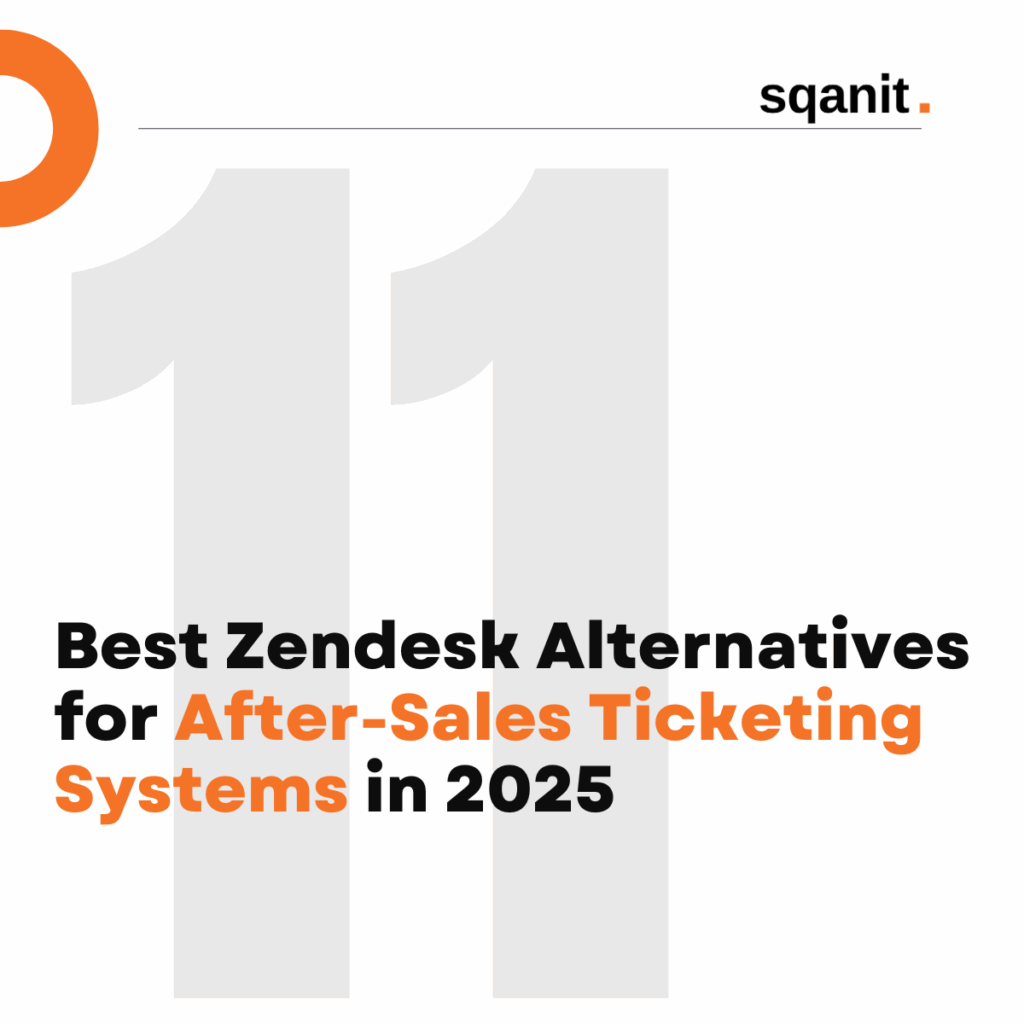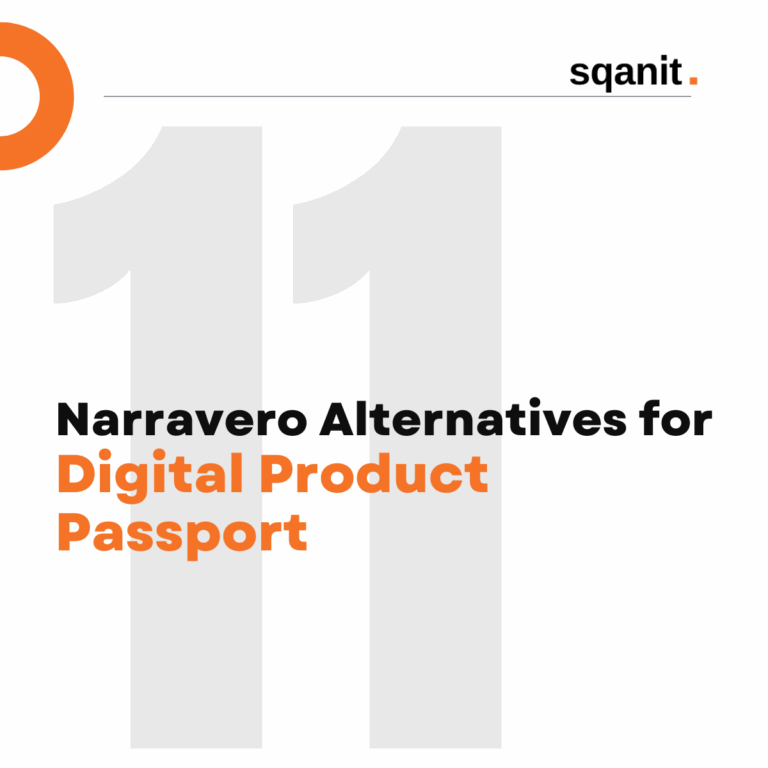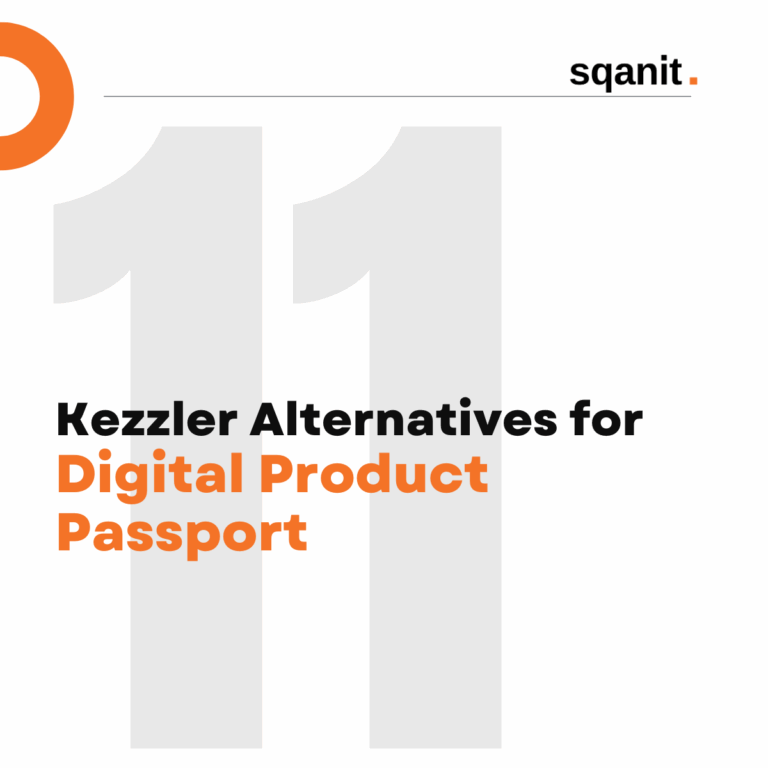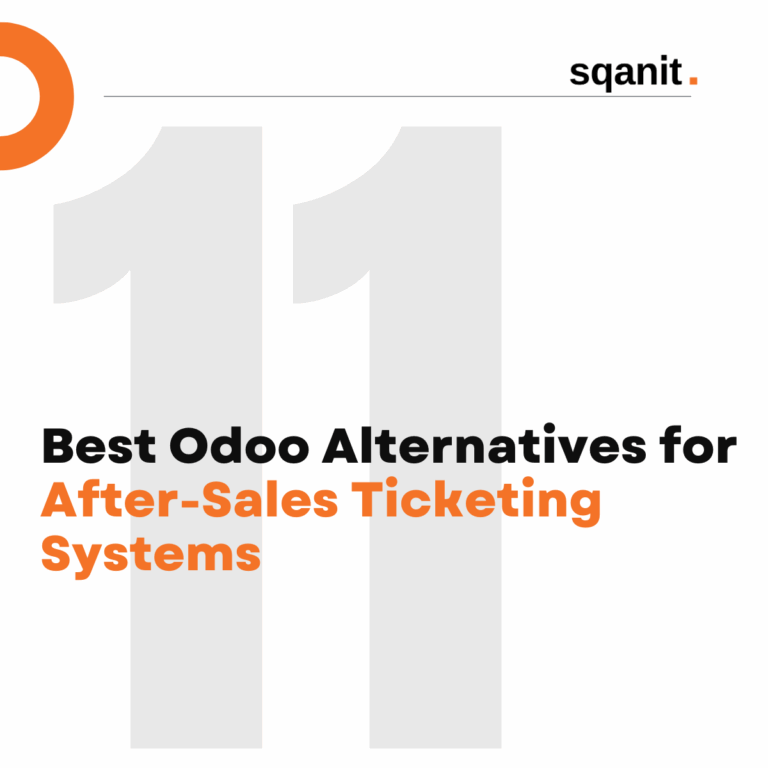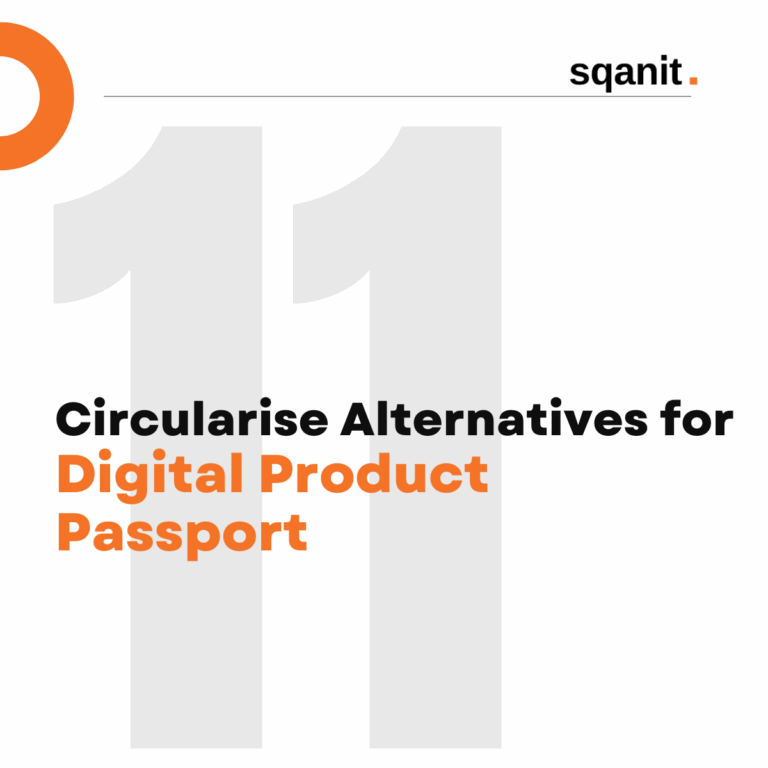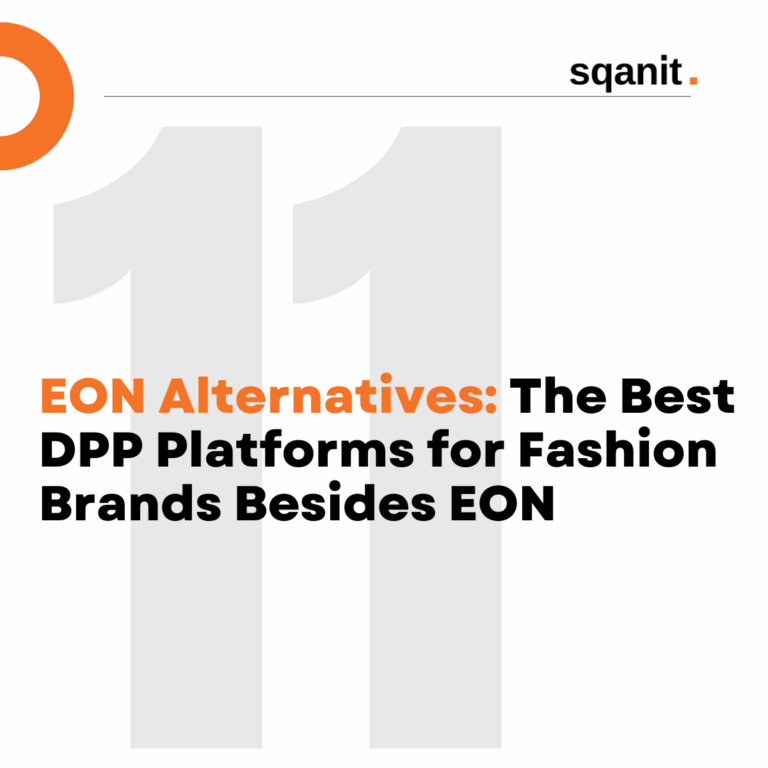When Help Feels Out of Reach
Manufacturers of physical products often face the same challenges: they have no insight into what’s happening with their end users. Until a support call comes in.
By then, it’s often too late or the call never comes. The product has already been used incorrectly, abandoned, or returned. How many users fall into this “silent segment” remains a mystery. Long wait times and a lack of direct support options at the device frustrate users and cost manufacturers valuable opportunities for customer retention (and revenue).
Zendesk is one of the most trusted helpdesk platforms on the market – and a popular choice for getting structured customer support up and running. For many companies, it’s a solid starting point.
However, when it comes to manufacturers of physical products, some businesses eventually reach a point where they need more specialized functionality – especially in after-sales service. If you’re evaluating your options, it’s worth exploring the leading Zendesk alternatives.
That’s why this Best Zendesk Alternatives article highlights some of the best alternatives to Zendesk for 2025. Especially for those who manufacture, sell, or support complex physical products with frequent user turnover. If that sounds like you: read on.
Overview: What Are We Comparing?
We’ll take a look at ten of the most established providers in 2025, each offering their own take on ticketing for physical products – with varying degrees of integration into self-service, remote support, and product data. This overview will help you decide which system best fits your business model.
Comparison Criteria: What Really Matters
These criteria help assess not just technical capabilities, but also the system’s impact on user experience and service efficiency.
| Criterion | Why It Matters |
|---|---|
| After-Sales Specialization | Is the system designed for manufacturers of technical products with specific support needs? |
| Self-Service Capability | Can users find information or resolve issues independently? |
| Omnichannel Communication | Does it support modern contact channels like live chat, video, or social messaging? |
| Automation & Routing | How intelligently can cases be prioritized, assigned, or escalated? |
| Industry-Specific Features | Are there modules for warranty, lifecycle, spare parts, or AR support? |
| Ease of Use & Customizability | Is the system easy to use and adaptable to your internal processes—for both employees and end users alike? |
“Most ticketing systems are reactive — they wait for someone to reach out. We flip that model: with sqanit, the product itself becomes the entry point for support and communication. That’s how we reach users who would otherwise stay invisible.”
— Markus Gatzke, CEO sqanit
Quick Comparison: Features at a Glance
| Provider | After-Sales Focus | Self-Service | Omnichannel | Automation | Industry Focus |
|---|---|---|---|---|---|
| Zendesk | General | ✔️ | ✔️ | ✔️ | Horizontal |
| Odoo | Low | ➖ | ✔️ | ➖ | ERP-centric |
| ServiceNow | Medium | ✔️ | ✔️ | ✔️ | Enterprise |
| Effort | High | ✔️ | ✔️ | ✔️ | Manufacturing |
| Zoho Desk | Low | ✔️ | ✔️ | ✔️ | SMBs |
| Syncron | Very High | ✔️ | ➖ | ✔️ | Industrial, OEMs |
| Salesforce SC | High | ✔️ | ✔️ | ✔️ | Industrial, Retail |
| Quanos | Medium | ✔️ | ➖ | ➖ | Machinery |
| InnoSoft | High | ✔️ | ➖ | ✔️ | Field Service |
| SAP SC | Medium | ✔️ | ✔️ | ✔️ | Enterprise |
Analysis and Insights: What Works for Whom
Zendesk
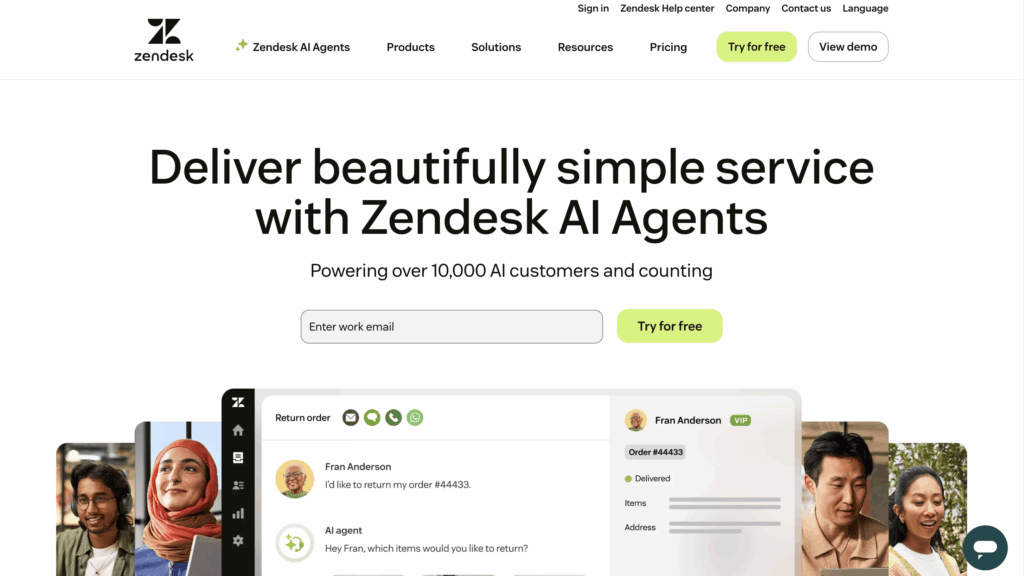
Zendesk provides a well-established customer service platform with a wide range of use cases. Its ticketing system is modular and supports a variety of communication channels.
Strengths:
- Intuitive user interface
- Comprehensive omnichannel support (email, chat, social media)
- Large integration ecosystem
Limitations:
- No explicit focus on after-sales for physical products
- Advanced features like lifecycle management or AR support require third-party tools
Target Audience:
Best suited for companies with a strong focus on digital customer service and well-defined communication processes—particularly in e-commerce, software, or telecommunications.
Odoo as Zendesk Alternative
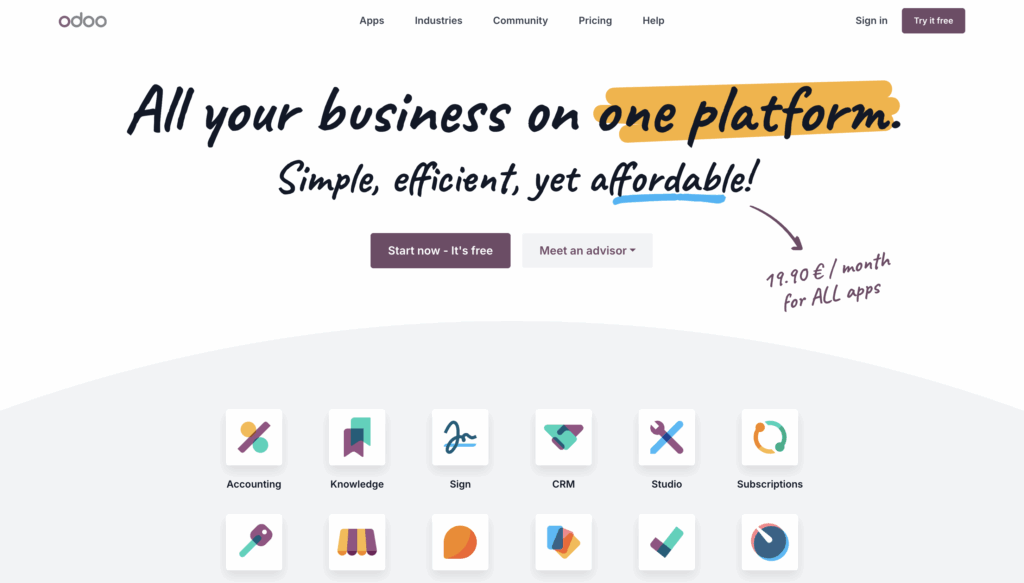
Odoo is a modular ERP system that includes support and helpdesk modules. It stands out for its broad business coverage and open-source flexibility.
Strengths:
- Fully integrated ERP ecosystem
- Customizable and open-source
- Cost-effective for smaller teams
Limitations:
- Helpdesk not specifically tailored to technical products
- Maintenance, spare parts, or equipment status need to be handled separately
Target Audience:
A good fit for SMBs needing integrated business processes and in-house IT capabilities—especially in retail, services, or project-based industries.
ServiceNow as Zendesk Alternative
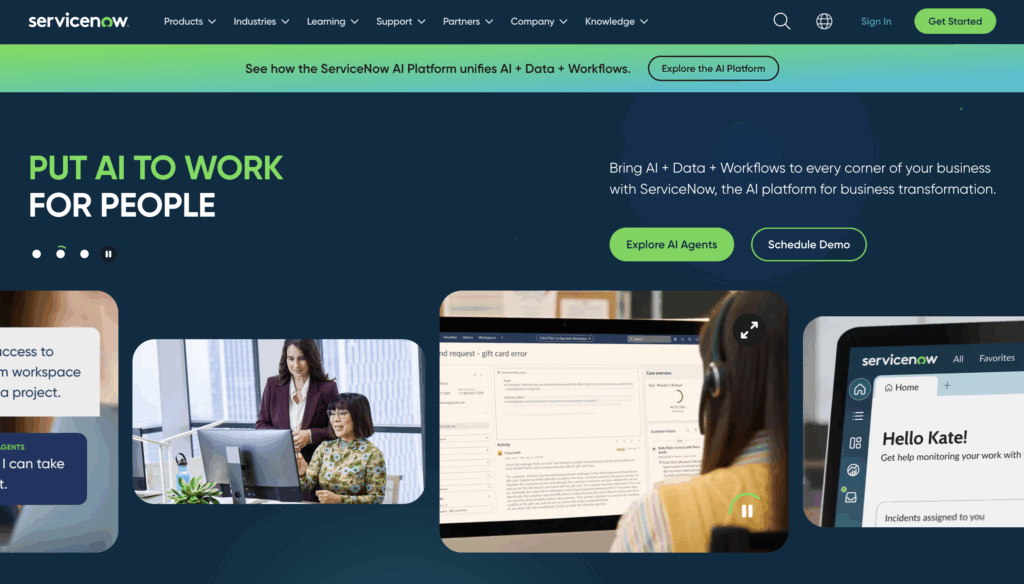
ServiceNow is a scalable enterprise platform for IT and service management. It’s particularly suited to organizations with standardized processes and global service structures.
Strengths:
- Powerful workflow engine
- Extensive automation capabilities
- Strong governance and SLA features
Limitations:
- High implementation and customization effort
- Industry-specific features not included natively
Target Audience:
Ideal for large enterprises with complex internal structures, high service volumes, and centralized support departments.
Effort as Zendesk Alternative
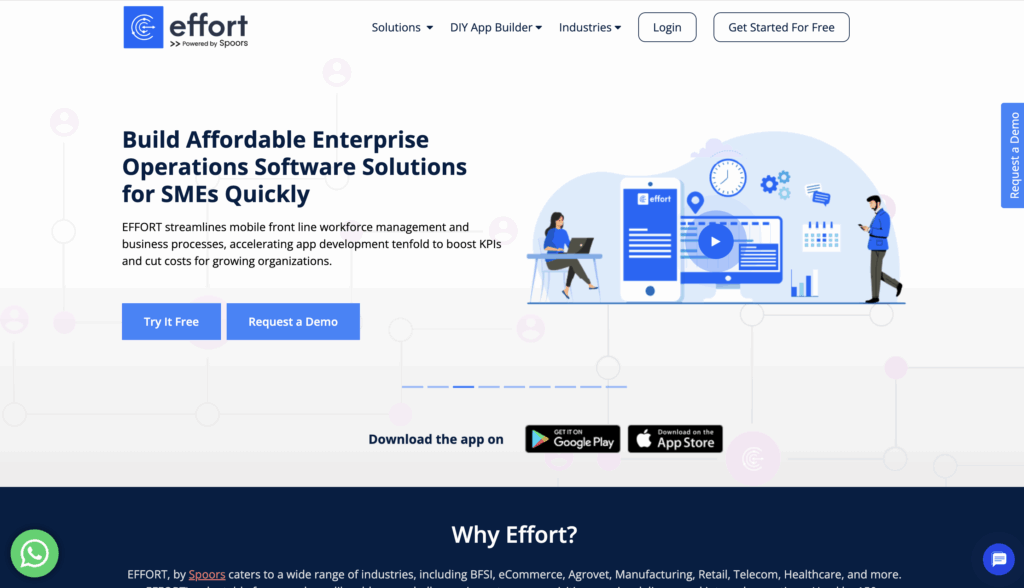
Effort is built to meet the after-sales needs of manufacturing companies. It combines classic ticketing with mobile field service, AR-based remote support, and product knowledge.
Strengths:
- Strong focus on industrial use cases
- Mobile tools for field technicians
- Integrated AR support and product documentation
Limitations:
- Limited presence outside German-speaking regions
- Integration depth varies by project
Target Audience:
Best for machinery and plant manufacturers and mid-sized technical businesses seeking to make after-sales a strategic channel.
Zoho Desk as Zendesk Alternative

Part of the Zoho Business Suite, Zoho Desk is a user-friendly ticketing solution aimed at small to mid-sized teams.
Strengths:
- Easy-to-use interface with quick setup
- Solid automation features
- Good value for money
Limitations:
- Limited specialization for technical products
- No built-in lifecycle or spare parts integration
Target Audience:
Ideal for service-oriented SMBs looking for a lightweight, easy-to-implement customer support tool.
Syncron as Zendesk Alternative
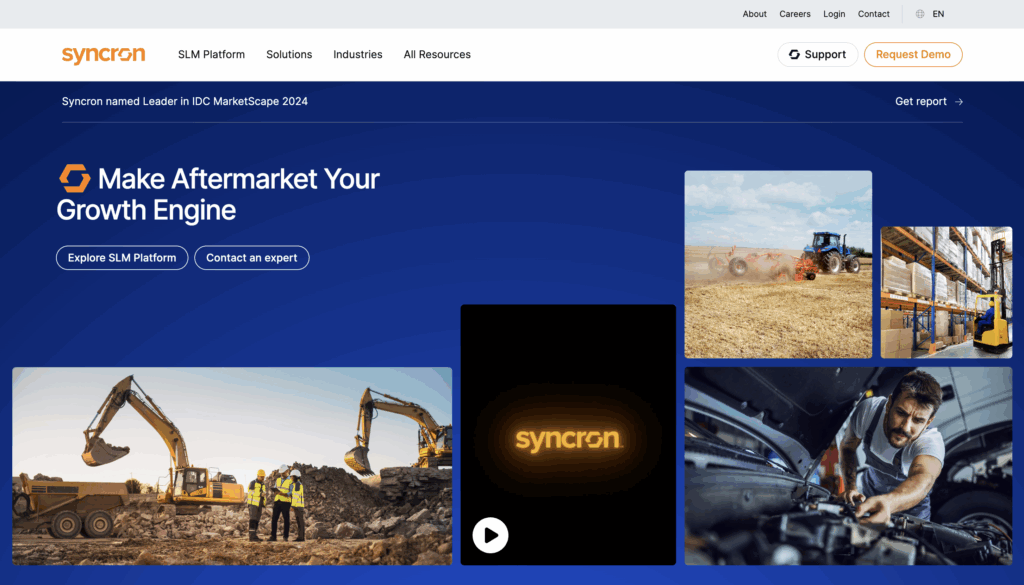
Syncron specializes in spare parts management, warranty, and service optimization for the industrial aftermarket. It offers a deeply integrated ecosystem for OEMs.
Strengths:
- Deep integration of parts and warranty processes
- Data-driven service supply chain optimization
- Strong industry expertise
Limitations:
- Less focused on traditional ticketing functionality
- Complexity and cost tailored to large OEMs
Target Audience:
Recommended for industrial manufacturers with large service organizations and global parts distribution.
Salesforce Service Cloud as Zendesk Alternative

Salesforce Service Cloud extends Salesforce’s CRM portfolio into service management. It offers strong scalability and powerful customer engagement features.
Strengths:
- Deep CRM integration
- Extensive partner ecosystem for add-ons
- Mature automation and reporting capabilities
Limitations:
- After-sales features require customization
- Cost and complexity increase with scale
Target Audience:
Suited for companies with a strong CRM focus, high communication volume, and the need for flexible marketing and sales integration.
Quanos as Zendesk Alternative
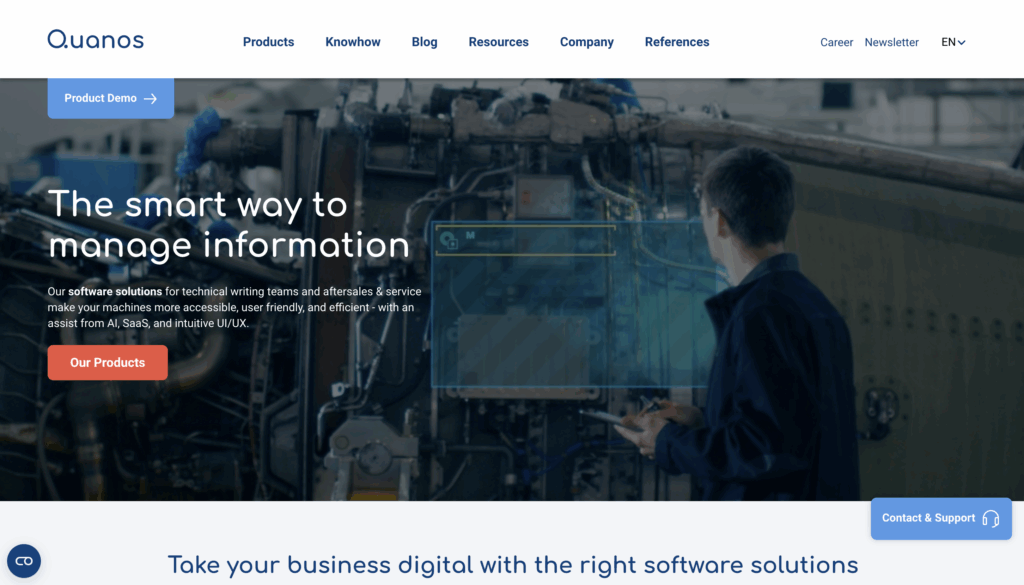
Quanos focuses on technical documentation, spare parts catalogs, and machine information. Ticketing is offered in connection with documentation usage.
Strengths:
- Deep expertise in parts and product documentation
- Link between tickets, documentation, and 3D visualization
- Well-suited for complex machines
Limitations:
- Helpdesk features are secondary
- Strong specialization in technical writing environments
Target Audience:
Best for machine manufacturers aiming to digitize their documentation processes and integrate them into support.
SAP Service Cloud as Zendesk Alternative
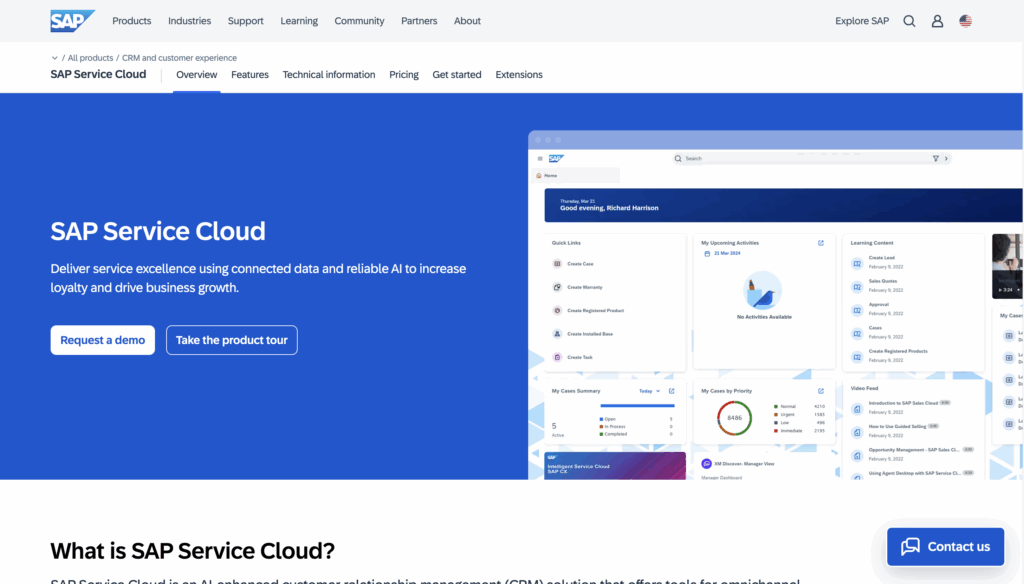
Part of the SAP Business Suite, SAP Service Cloud targets companies with complex, international service operations.
Strengths:
- Deep SAP ecosystem integration
- Extensive SLA and escalation management
- Global compliance and multilingual support
Limitations:
- Typically requires external implementation support
- Cost-effective primarily for large setups
Target Audience:
Well-suited for enterprises or large mid-sized companies already using SAP and needing centralized service process control.
InnoSoft as Zendesk Alternative
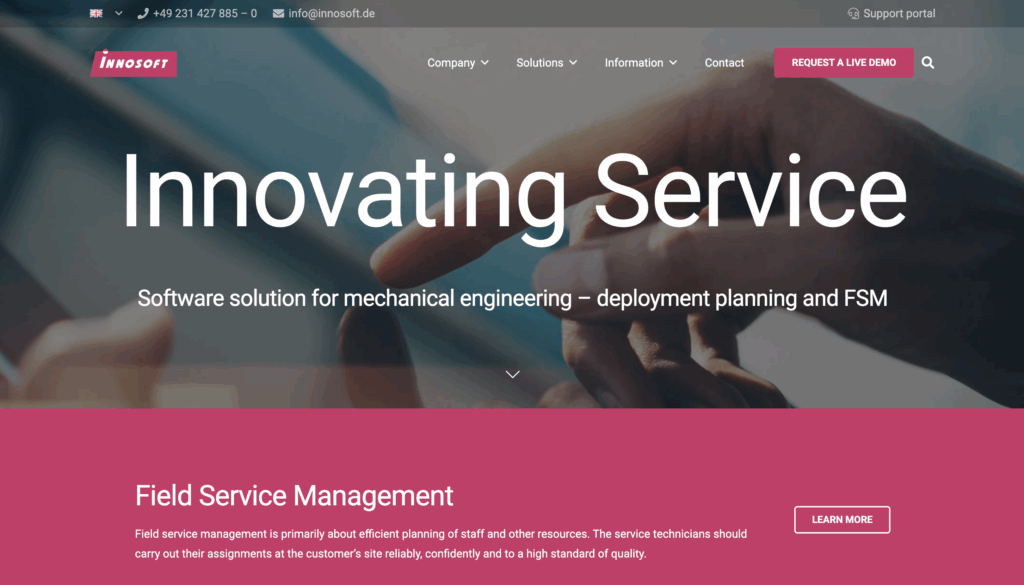
InnoSoft combines service management, scheduling, and ticketing with a focus on technical field operations.
Strengths:
- Supports technical maintenance tasks
- Optimized dispatch and planning tools
- Integration of tickets and calendars
Limitations:
- Focus on internal service process coordination
- Less emphasis on direct end-user support
Target Audience:
Ideal for companies with large field teams, service contracts, and regular maintenance cycles—e.g., MedTech or facility services.
And What About sqanit?
Some manufacturers rely on platforms that don’t treat ticketing in isolation, but rather as part of a holistic product-service experience – like sqanit. This solution combines self-service, augmented reality-based remote support, digital product passports (DPP), and structured ticket flows – all without requiring users to register, search a website, or install an app. The result: minimal friction, context-aware help, and a brand experience delivered right at the device.
But sqanit doesn’t just handle service efficiently – it redefines what ticketing can achieve in a product-driven world. Instead of waiting for support cases to arise, sqanit turns the product itself into a smart touchpoint that proactively guides, informs, and connects. This enables manufacturers to open up a direct line of communication with end users they’d otherwise never reach – closing the gap between product usage and product support.
This is particularly relevant for manufacturers of complex, high-touch products with frequent end user changes, significant support demand, and a digital service vision.
Conclusion: Which System Fits Which Setup?
| Company Profile | Recommendation |
|---|---|
| Enterprises with complex IT infrastructure | ServiceNow, SAP SC |
| Product-focused SMBs | Effort, InnoSoft, Zoho Desk, sqanit |
| Industrial OEMs with advanced service needs | Syncron, Salesforce SC |
| Tech-driven manufacturers with heavy helpdesk use | Quanos, sqanit |
| Teams early in their digitization journey | Zendesk, Odoo |
Next Steps
💡 Many providers – including sqanit – offer product-based trials using QR codes. Testing your real-life use cases is often the best way to evaluate whether a platform fits your specific needs.
That way, you can make an informed decision about how to reconnect with your analog users and turn service from a cost center into a growth driver.
Discover how other manufacturers have digitized their after-sales workflows – right at the product.
👉 Learn more about sqanit

Leopold has several years of experience in B2B SaaS product marketing and a deep understanding of the software landscape and modern tooling. At sqanit, he is responsible for product communication – helping companies whose users don’t read manuals discover better alternatives.

